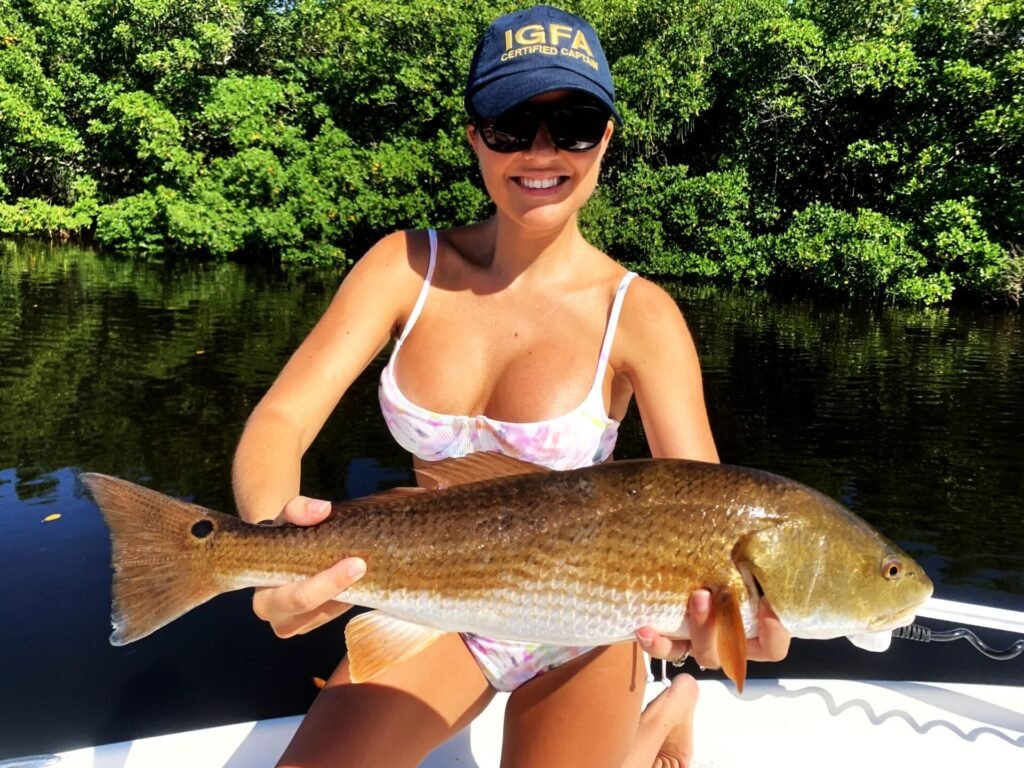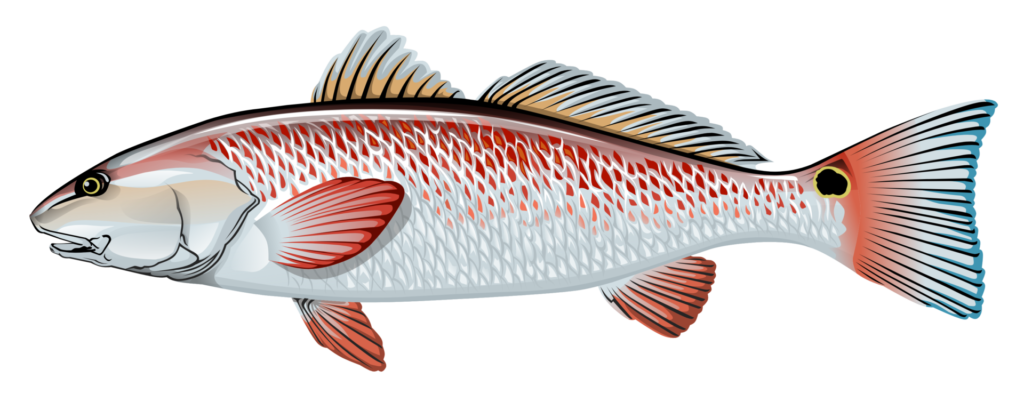
Catching And Cooking Redfish
Captain Gavin O’Neal offers his proprietary secrets on hooking and cooking this delicious Tampa Bay fish.
Catching Redfish

Size and weight: 18” to 30” or more. The more south or north you go (from Florida), the fish can get bigger. Myrtle Beach has some measuring 40”.
General Info
Redfish is one of our favorites, as it is one of the more fun fish to catch. They’re big, heavy, and beautiful, with a distinctive black spot on the tail. Common on the Atlantic coast and in the Gulf of Mexico, Redfish, sometimes called Red Drum, Channel Bass, or Puppy Drum comes from the Drum family. Mostly caught by sport fishermen (rather than commercial fishermen), Red Fish are the ‘ultimate fighting’ fish, and anglers seek them for this fight. Will never show its face, unlike a snook. They are lazy during the Summer.
When/Where
Time of year: Red fish are active year-round. From October to the hottest part of the summer. Very active from March to July.
Location: Red Fish love the brush and mangroves, a tree that grows along the coasts of saltwater. Red Fish stay in shallow or deeper waters.
Time of Tide: At low tide, the bait gets inside the roots and they are drawn to it. Similarly, they eat shrimp and bait in barnacles on roots.
How
Bait: Live bait is best, and a small hook helps them bite. It’s best to have different varieties of bait, including greenbacks (in cooler water), pinfish (for hotter water and season, will stay up in the brush), and shrimp for Spring fishing.
Method: Reel and rod, with light tackle, and chum.
Cooking Redfish

Drink Pairings

Drinks: White wine, sweet tea, session light beer with lemon, bourbon
Flavor
Deliciousness: 7 out of 10.
Flavor: Redfish have little aftertaste, and are not especially fish-smelling, despite being savory. The texture is very tender, dryer than some fish.
Cleaning
Strike (knife) behind the gill plate, bisect along the backbone, producing two filets. Leave the the skin on and cook.
De-gutting: De-gutting is not necessary if you are cutting fillets – simply cut around the fish guts.
De-blooding: Spanish Mackerel, Redfish, Grouper and Sharks are typically de-blooded.
De-veining: Is recommended for larger fish, including Spanish Mackerel, Redfish, and Sharks.
Cooking
Methods: Redfish be fried, grilled, baked or sautéed (blackened), and can be worked into most any cooking tradition (see below).
Dishes: Redfish is appropriate for any of the dish styles (see below).
Traditions: Redfish is appropriate for any fishing tradition (see below).
Suggested Dishes
Use tinfoil and leave open. Seasoning is household seasonings. Lemon pepper and garlic. When fish is done, you’d use lemon juice and butter. Don’t add butter before the fish is cooked.
Cooking Fish, Generally
Traditions: Plain, Upscale, Southern, Creole, Cajun, Western, Southwestern
Cooking Methods
Sautéed (blackened): use a high-temperature oil with minimal flavor. Avocado, grapeseed, linseed, sunflower, safflower.
Deep Frying: use similar oil to sautéed, but more of it.
Baking: Method 1: Use tinfoil and leave open. Seasoning is household seasonings. Lemon pepper and garlic. When fish is done, you’d use lemon juice and butter. Don’t add butter before the fish is cooked. Method 2: same but close foil.
Grilling: if you want more flaky entrée, low heat. Maybe 10 minutes, both sides. Heavier texture, use a higher temperature.
Dish Descriptions
Entrée: Many people prefer blackened, filet skin on one side and leave skin on the other.
Fish tacos: Require fileting both sides. Cube, deep fry in a batter.
Fish soup or stew: Reheats well. A common cioppino or Cajun recipe will suffice.
Fish salad. Deep fry to keep together, into a crisp. Cover meat halfway full with oil. Cook in a cast iron skillet. Use a Caesar dressing.
Sides: Sweet potato, baked potato, potato wedges, brown rice, hush puppies
Vegetables: Asparagus, broccoli, salad, sliced tomatoes and avocado, string beans, seasoned collards, okra
Appetizers: Ceviche dip and fish cakes.



